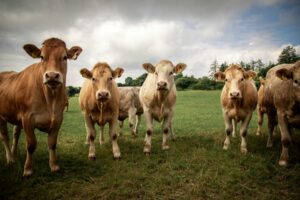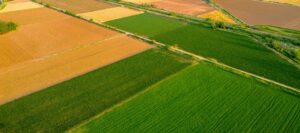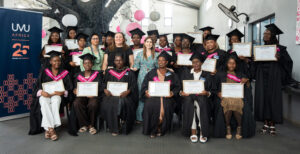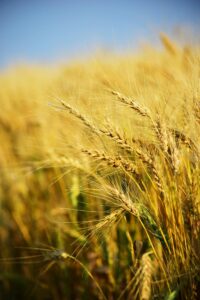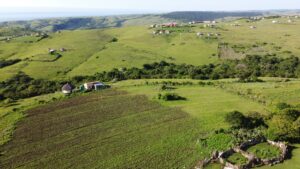Introduction
Conservancies find common ground and create a meaningful partnership between nature conservation and agriculture.
The agricultural sector uses some 80% of South Africa’s 120 million hectare land surface, incorporating some of our country’s most sensitive ecosystems. Many of our country’s farmers are indeed good land conservationists. Unfortunately, with ever increasing financial, resource and manpower burdens placed at the foot of our agricultural industry, many farmers are forced to ensure that every portion of their land becomes financially productive. How we avoid the negative impact on our biophysical environment?
Conservancies
A conservancy is a voluntary association between land users/owners who cooperatively wish to manage their natural resources in an environmentally sustainable manner without necessarily changing the land-use of their properties. Registration is granted by the relevant provincial nature conservation authority.
A conservancy is NOT a miniature game reserve or nature reserve (even if it is about farming in a way which is game and nature friendly).
A conservancy is a voluntary and co-operative action by landowners/users to provide for the yearnings of their souls, e.g. space, silence and the aesthetic therapy of natural beauty, and in doing so are compelled to look after the requirements of nature. To live and/or work in a conservancy does not imply that you have to change your form of land use, or that your title deed is going to be amended. It also does not imply that someone is going to offer you monetary compensation for the time, effort and money you invest into the quality of your own life and for the common good.
What living in a conservancy does imply is that each individual slowly but surely starts to consider the consequences, both positive and negative, of his or her actions. The consequences for self, family, neighbours, community, own property, adjacent properties, the conservancy as a whole and eventually much wider. For example, a river does not flow through only one smallholding, farm or even conservancy.
A conservancy looks after the interests of nature because it assumes that the best interest of humans and nature are inextricable. What is good for the one is good for the other and vice versa. In a conservancy, people are considered key species of the ecosystem or agroecosystem and have to learn to rub shoulders with other life forms in such a manner that most can continue to exist.
Both the words “ecology” and “economy” stem from the Greek root oikos that can be translated as household. Perhaps the idea that what is in our best interest is also in the best interest of nature or vice versa, is not far fetched at all.
The case for conservancies
South Africa’s game parks and nature reserves are not sufficient for the conservation of biodiversity, simply because most of our biodiversity exists outside these formally protected areas.
Conservancies bring many advantages, for the biodiversity as well as for the communities living or farming within it:
- Biodiversity survives and physical resources are conserved.
- The reporting, monitoring and co-operatively managing of exotic plants and animals happens.
- Wildlife increases in conservancy areas.
- The economic value of the area is improved owing to healthier veld conditions and better overall security.
- Landowners become more conscious of their indigenous animal and plantlife.
- Game becomes tamer and is more readily seen, but protected at the same time.
- Conservancies are extensively used to release rehabilitated wildlife
- A closer community is formed.
- The local population usually supports the presence of Game Rangers.
- Vagrants tend to avoid a regularly patrolled area.
- Harassment of local population is reduced.
- There are marked decreases in stock and crop theft in the conservancy area.
- There is better control of stray dogs, and less hunting by dogs and the chances of rabies.
- Fences are patrolled more regularly.
- Pumps and water holes are patrolled more regularly.
- There are fewer uncontrolled forest and veld fires in the area owing to co-operative fire management strategies.
- There is better general security. New skills are developed. Conservation by people for people (conservancies) is a new conservation ethic, which embodies coexistence rather than segregation. How this is to be planned for and managed will tax local people to the utmost, but also be the means to heal the wounds of the past and create a dignified existence. We need to coexist with nature in a manner that will allow most species to survive well into the next century. For this to become reality local people will need to develop many skills.
- Conservancies enhances the use of the district for nature based education.
- The opportunity for eco/agro tourism is also enhanced.
An overall better social, cultural and natural environment leads to a more healthy environment and, in turn, instils a greater sense of community pride in one’s surroundings.
What types of conservancies are there?
The most common conservancies types in South Africa fall into the following categories:
- Rural (e.g. with nature conservation or LandCare motives)
- Agricultural
- Peri-Urban
- Urban – in urban living areas
- Industrial – in industrial areas
- Informal Settlements
- Marine & Coastal – in the marine & coastal areas
Some provinces also have other types of conservancies:
- Educational Conservancies e.g. on or around campuses and school grounds.
- Habitat Conservancies, set up to safeguard or conserve specific endangered habitats e.g. Bullfrog Pan Conservancy in Gauteng.
- Cultural Conservancies – to protect places of cultural or historical value.
Rangers
In rural and agricultural districts that have formed a conservancy, it is advisable to employ field rangers. This, however, is a matter of choice and necessity.
Although there are, obviously, costs involved with the employment of field rangers, one must decide if this is offset by the savings a community gains through greater protection of natural resources in the area, proper maintenance of fences and better protection of livestock and crops through a more efficient “on the ground” reporting system.
Training of rangers
Most Nature Conservation Departments provide training to ensure that conservancy rangers are well trained and that high standards are met. Training is usually free but the conservancy is responsible for accommodation and food during training. Sponsors may be identified to provide support for training programmes. The following aspects are covered during most of the courses:
- security and discipline
- methods of patrolling and reporting
- Nature Conservation laws
- identification of plants, insects, fish, birds, reptiles and animals
- identification of exotic plants and animals
- muti and medicinal plants
- control of veld fires
- benefits of recycling
- personal hygiene and yard management
- public relations
- tourism
- maintenance of hiking trails
Get in touch with your provincial NACSSA affiliate (see “Role players” heading) for details, or visit www.nacssa.co.za.
Business opportunities
The financial side of any organisation can see its success or failure so this should be a focus point when starting a conservancy. The financial status and management of the conservancy should be dealt with in the constitution. The conservancy should have a financial year beginning and end, a bank account and a treasure managing the funds. It should also give feed back to the members on the financial status of the conservancy when needed at the annual general meeting.
The examples below are just a few, where funds could play a major role in the functioning of a conservancy:
- employing rangers in the conservancy;
- training rangers in the conservancy;
- controlling exotic plant and animals in the conservancy;
- rehabilitating habitats in the conservancy;
- maintaining fire breaks around the conservancy;
- getting specialist to assist in the management of the conservancy;
- putting up signboards in the conservancy.
Management fees are the obvious way to generate some funds for the conservancy, but there are other ideas, mainly revolving around co-operation in eco-tourism opportunities. The following can be developed by the landowners to generate income in the conservancy:
- hiking trails
- picnic areas
- fishing opportunities
- bird watching
- mountain bike trails
- overnight facilities
- farm holidays
- sponsors can provide financial support
Labour intensive conservancy projects, such as invasive alien plant management, should create opportunities for the hiring of jobless, previously disadvantaged communities.
Tax incentives
There is a new push for biodiversity stewardship where farmers are given incentives and support to include areas that are managed for biodiversity in their farms. Inquire about deductions for tax paying farmers under the Income Tax Act. Two of these are:
- expenditure on the conservation and maintenance of land under a biodiversity-management agreement entered into between the landowner and the Environmental Affairs Minister;
- a tax deduction for money spent maintaining land under the Protected Areas Act.
Contact your tax consultant or one of the role players (see heading further down this page) for more.
Projects and ideas for conservancies
Anyone can start a conservancy!
Biodiversity is declining at an alarming rate and ecosystems face terminal threat through mass extinction of species. Plant and animal resources have always fed and nurtured us. Forming conservancies is a positive step towards protection of our environment and our cultural resources. In our conservancies are rare plant and animal life as well as historical sites – it is essential that ALL these valuable natural assets be noted.
The way you wish to organise your conservancy and the projects initiated will be up to your community and committee, however, please note that, although conservancies can play an important role in reducing crime in an area, they should not be confused with security organisations such as farm-watch.
Ideas for conservancies:
- Look at places of importance, historical places and natural places:
- Historical Places i.e. buildings, walls, trees, water springs, pits, history of the conservancy, graves.
- Natural Places i.e. wetlands, streams etc, restore wetlands and banks of wetlands, restore stream flow and stream banks, grasslands, restore grasslands by removing litter, start a trail, construct a bird hide, reintroduce wildlife, plant an indigenous forest, eradicate exotic and invader plants, start a horsetrail, establish a nursery, environmental club, help farmers with fire breaks etc.
- Develop checklists of species e.g. birds, trees, plants insects, amphibians, reptiles, animals.
- Other interesting project ideas are to start a recycling project, consider fund-raising e.g. paper tin and plastic collecting, start a compost heap, vegetable garden, herb garden or medicinal plant nursery.
Select a steering committee that will inform the participants about setting up and running the conservancy – CONSERVANCIES ARE THE MOST IMPORTANT CONSERVATION ACTIVITY FOR THE NEW CENTURY.
Remember – each Conservancy develops its own constitution. Refer to the NACSSA websites for examples.
For examples of conservancies, see the next heading. You could also refer to available literature like the booklet Projects and Ideas for Conservancies available from Gauteng Conservancy Association. Visit www.conservancies.co.za.
Role players
View the Premium Listings below (scroll down or click on “Premium Listings” on the Table of Contents to the right).
Further reference:
Examples of some conservancies
Individual conservancy websites can be accessed from www.conservancies.co.za and www.nacssa.co.za. and other representative groups.
Websites and publications
Refer to the websites listed earlier on this page.
- Individual conservancies websites can be accessed on www.conservancies.co.za and www.nacssa.co.za.
- Find NACSSA agricultural policy documents and more on www.nacssa.co.za.
- For more information and comprehensive manuals e.g. Conservancies Handbook, Guidelines for Conservancy Management Planning, School Conservancies etc. go to www.conservancies.org or contact your nearest conservancy.
- Harrison J. & Young D. 2010. Farming for the future: farming sustainably with nature. Cape Town: Animal Demography Unit. The book includes notes on conservancies. Download it at http://www.adu.org.za/docs/farming_for_the_future_lr.pdf
- A national newsletter NACSSA NEWS is published and distributed to interested parties via email.
- Find the many documents for conservancies at www.conservationatwork.co.za.
- Many conservancies produce their own newsletters, ‘essential reading’ category updates, pamphlets, handbooks, guidelines, as well as information on projects and ideas for conservancies. Examples of newsletters are KZN’s The Guinea fowl and Gauteng’s The Ear to the Ground.
- Ezemvelo KZN Wildlife has a booklet Guidelines for the Formation of a Conservancy, and has a wealth of advice about where to start, how to draw up a constitution etc. Call 033 845 1999.
- Share-Net used to be an informal networking project that supported environmental education and development in the SADC region. Its material can still be downloaded.
Sources: Trafford Petteron (NACSSA); Ivan Parkes (Gauteng Conservancy and Stewardship Association); an abridged version of At Kruger’s articles in The Malachite (2005). Thanks to Ivan Parkes for feedback on the draft chapter

